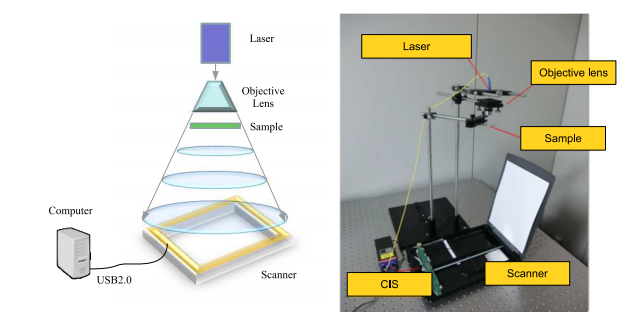
It allows to keep PV going, with more focus towards AI, but keeping be one of the few truly independent places.
-
From MIT: The A4 digital scanner gathering dust under your desk could find new life as a gigapixel holographic microscope, say Japanese engineers who have constructed one at minimal cost

The setup could hardly be more basic. The simplest way to make a hologram is the so-called “in-line” method. This involves placing the laser, sample and recording medium in line with each other. The laser shines onto, and past, the sample. Any light that is diffracted by sample also interferes with undiffracted light, creating an interference pattern.
The difficult task is recording this interference pattern with the required resolution. But Shimobaba and buddies have done it with a standard A4 consumer scanner capable of recording at 4800 dpi.
That’s the kind of scanner that is probably gathering dust on your bookshelf or behind your desk. It works using a single line of light-sensitive CCDs that it scans down the length of the page. Theoretically, it is capable of achieving a resolution of 56,144 x 39,698 pixels. That’s over 2 gigapixels.
These guys have use their equipment to make holograms that are slightly smaller than this with 0.43 gigapixels. They’ve recorded a US Air Force 1951 test target as well as holograms of an ant and a water flea.
That’s entertaining work that makes it possible for almost anybody to make a high-resolution digital hologram at little cost.
-
In case anyone, like me, wonders what these images look like: it's not as spectacular/scifi as the term holographic suggests ;) http://en.wikipedia.org/wiki/Digital_holographic_microscopy
Howdy, Stranger!
It looks like you're new here. If you want to get involved, click one of these buttons!
Categories
- Topics List23,993
- Blog5,725
- General and News1,354
- Hacks and Patches1,153
- ↳ Top Settings33
- ↳ Beginners256
- ↳ Archives402
- ↳ Hacks News and Development56
- Cameras2,368
- ↳ Panasonic995
- ↳ Canon118
- ↳ Sony156
- ↳ Nikon96
- ↳ Pentax and Samsung70
- ↳ Olympus and Fujifilm102
- ↳ Compacts and Camcorders300
- ↳ Smartphones for video97
- ↳ Pro Video Cameras191
- ↳ BlackMagic and other raw cameras116
- Skill1,960
- ↳ Business and distribution66
- ↳ Preparation, scripts and legal38
- ↳ Art149
- ↳ Import, Convert, Exporting291
- ↳ Editors191
- ↳ Effects and stunts115
- ↳ Color grading197
- ↳ Sound and Music280
- ↳ Lighting96
- ↳ Software and storage tips266
- Gear5,420
- ↳ Filters, Adapters, Matte boxes344
- ↳ Lenses1,582
- ↳ Follow focus and gears93
- ↳ Sound499
- ↳ Lighting gear314
- ↳ Camera movement230
- ↳ Gimbals and copters302
- ↳ Rigs and related stuff273
- ↳ Power solutions83
- ↳ Monitors and viewfinders340
- ↳ Tripods and fluid heads139
- ↳ Storage286
- ↳ Computers and studio gear560
- ↳ VR and 3D248
- Showcase1,859
- Marketplace2,834
- Offtopic1,320



